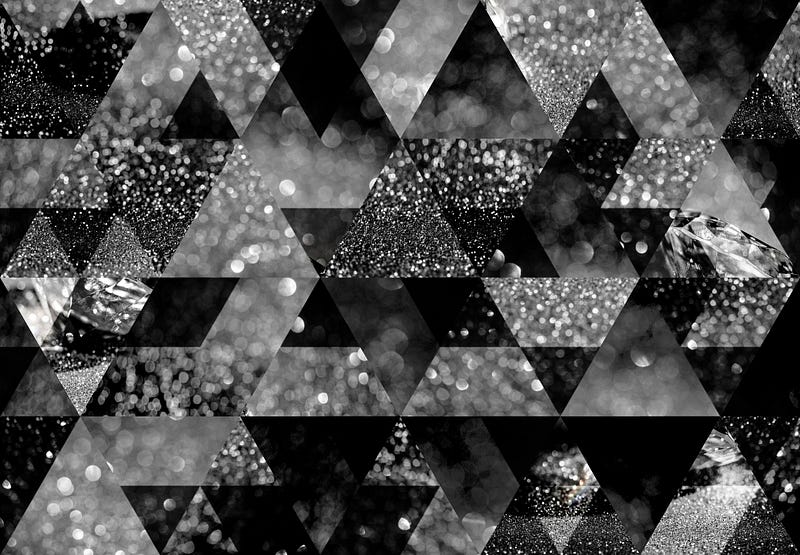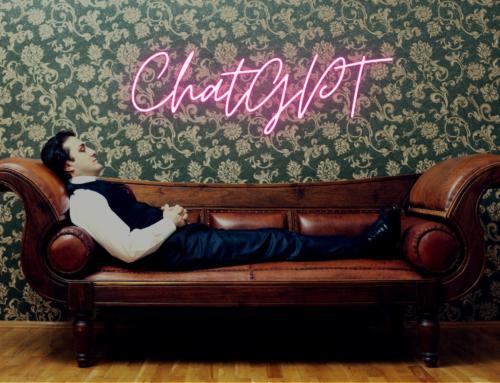The body is strong, the mind is weak.
Our bodies have two ways of recovering from trauma: (1) homeostasis, and (2) hypertrophy.
Homeostasis is our body’s response to external stimuli in an attempt to return us to a state of equilibrium. For instance, when we feel cold, we start to shiver to raise our temperature back to 98.6 — it’s equilibrium temperature. Likewise, when we’re at the beach and begin to overheat our pores open to help return us to this homeostatic temperature. If we eat or breathe in a dangerous substance, our bodies move quickly to purge it through our digestive system.
Homeostasis is a critical evolutionary ingredient to our body’s resilience.
But, our bodies can go beyond resilience.
David Goggins is a retired Navy SEAL and an ultra-endurance athlete. Outside Magazine once named him the fittest (real) man in America. In 2005, Goggins entered a 24-hour ultramarathon in San Diego. Despite having never attempted to run a marathon before, he ran over 100 miles in just over 19 hours. He suffered several stress fractures and apparently peed blood by mile 70 of the race.
He is the only man in history to complete elite training as a Navy SEAL, Army Ranger, and Air Force Tactical AirController. And in 2013, David broke the world record for the most pull-ups done in 24 hours — he pulled up his body weight 4,030 times.
Goggins exemplifies what happens when you take the body and mind beyond resilience.
One of the secrets to his superhuman ability is a process known as hypertrophy.
Muscle hypertrophy refers to the process of literally building muscle. (Goggins was a powerlifter for many years.)
It increases the size of the muscles on the human skeletal frame. The underlying cells grow — not in number — in size. The volume of the muscle tissue is enlarged.
Hypertrophy is the body’s way of adapting to its new environment. When it experiences repeated stress to the tissue from activities such as strength training and anaerobic exercise, the body changes itself to accommodate the new higher loads. It doesn’t return to equilibrium, it prepares itself for a new higher norm.
No one knows precisely how this process works, it simply emerges.
Goggins leveraged this phenomenon to take his mind and body to new ultra heights.
He is beyond resilient, he is antifragile.
This is part two in our series exploring ways to build companies that go beyond resilience.
As Nassim Taleb, who coined the phrase, explains, “Antifragility is beyond resilience or robustness. The resilient resists shocks and stays the same; the antifragile gets better.”
In part one, we discussed introspection, rapid feedback loops, and criticism, and open behavioral assessments.
These ideas come from a collection of ideas I gathered over the summer and includes thoughts from successful CEOs I’ve interviewed.
(I am also trying something new here. I plan to make this a living series that we update periodically with new ideas.)
You can also join the conversation with many CEOs and share your ideas here.

4 — Teach Your Team to Master Mental Models
I consider myself to be a systems thinker.
I like to decompose any system, be it a piece of technology, a company, a business process, into its component parts. I then draw the relationship between the parts and rules that determine how they interact with each other. It’s a superpower that helps me to understand (and explain) complex systems. This is how I’ve approached problems and made decisions for years.
It’s no surprise, really.
I studied computer science, and at the heart of any computing system is a series of automaton. These are tiny machines that work together — usually in a predetermined way — to create the experience of the whole system. Systems thinking is, therefore, about trying to see an entire system and all the inter-relations at once.
But, over the years as a CEO, I have found several of my decisions, in retrospect, were plain wrong. I learned a lot from these mistakes and certainly reflected on them. But, I now realize after this reflection, that I need a better system for making decisions.
So, last year, I read a lot of books about how we make decisions, how our minds work, and about successful leaders’ decision-making tools.
What I learned is that we, homo sapiens, suffer from two challenges: (1) We are so specialized these days — my engineering background for instance — we end up with a limited set of tools for solving problems and making decisions, and (2) Our minds are flawed and we are easily susceptible to cognitive biases.
The ideal thing to do, therefore, is to develop a toolkit of mental models.
As Charlie Munger puts it, “the first rule is that you’ve got to have multiple models — because if you just have one or two that you’re using, the nature of human psychology is such that you’ll torture reality so that it fits your models.”
A mental model is an explanation of how the real world works. There are hundreds of battle-tested mental models from computer science, biology, philosophy, statistics, psychology, you name it. They are summaries of a person’s thought process about how something works in reality.
You’ve probably heard of these: (1) The 80/20 rule (or Pareto principle), (2) no pain, no gain, (3) KISS (keep it simple stupid), (4) the bell curve, etc. These are the most commonly heard ones. But, there are hundreds more. Each one has an application to different scenarios.
I have started a personal project to understand the universe of mental models, dig deeper into the disciplines from which they were born, and develop a personal algorithm for making better decisions.
(I plan to write more about this in future articles on Mental Models.)
But, how could this process of improving decisioning help make a company more than resilient?
First, I would like to employ some systems thinking (a mental model) and a thought experiment (another mental model).
We want to answer the question, “what is a/my company?”
Is it a legal entity? Is it a group of people chasing a vision? Is it a combination of departments (sales, marketing, engineering, operations, IT)? Is it a living organism?
Well, imagine you could jump on a Virgin Galactic flight and experience the “overview effect.”
As you are looking down on your company from space, what you’ll see is a group of individuals that seem to be doing their own thing.
You’ll also observe that each person has a different cultural background, set of professional and personal experiences, life principles and biases, and ambitions. Most importantly, each individual has free will to make their own decisions in their own way.
Now, if I ask you to attempt to illustrate the systems view from this vantage point, you’ll find it nearly impossible. That’s because companies are complex systems.
Like our global climate, microorganisms, or the human brain, companies are made up of thousands of smaller elements — those decisions. Like neurons in the brain, thousands of decisions are made daily by independent people, yet these decisions interact unpredictably.
Now, as you fix your gaze and take in the whole company at once, you’ll notice that it seems to act like one unit — just like a flock of birds — either winning or losing in its chosen market. This is known as emergent behavior.
Companies, therefore, are complex systems whose behavior emerges as a result of its “DNA” and its decision-making process.
So, if you want to make your company antifragile, you have to improve the speed at which it returns to homeostasis after a shock. You have to improve your employees’ ability to learn from a catastrophic experience and find new patterns (hypertrophy). And, you have to increase its capacity to employ lateral thinking (a mental model).
One way to accomplish this is to improve your own decision-making ability as CEO. An even better approach is to go beyond yourself and make better thinking and decisioning a company-wide practice.
So, learn mental models, then teach your entire company how to employ them to improve your company’s reasoning, cognition, and decision-making. Hopefully, what will emerge is a company that goes beyond the equilibrium.
Here are two great books to get you started:
- Super Thinking: The Big Book of Mental Models, by Greg Weinberg, Lauren McCann. (I call it “weightlifting for the brain.” Our entire team is reading it now.)
- The Great Mental Models: General Thinking Concepts, by Shane Parrish (Shane’s blog, Farnam Street, is a wealth of information on better thinking.)
“the first rule is that you’ve got to have multiple models — because if you just have one or two that you’re using, the nature of human psychology is such that you’ll torture reality so that it fits your models.” — Charlie Munger
5 — Introduce Pre-mortems
Everyone knows about a post-mortem.
Post-mortems are great tools for uncovering improvement opportunities after the completion of every project. Teams perform post-mortems after each coding sprint in an agile environment. Sales teams decompose deals in win/loss reviews. Marketing teams perform post-mortems after events, a major content rollout, or after a webinar. The post-mortem after large customer implementations that can also be illuminating.
These crucial meetings should be a part of the playbook for every growing company. It will drive resilience in the team and a focus on continuous improvement by openly discussing what didn’t go well in a project.
(Here is a great post-mortem meeting template and tips.)
To be antifragile, however, a team must not only respond to failures in a project but begin to learn how to predict them.
This is the power of the pre-mortem.
What is a pre-mortem?
The first time I heard about a pre-mortem was in Daniel Kahneman’s legendary book Thinking Fast and Slow.
Later I found the following eloquent explanation by my friends at Farnam Street:
It’s called the pre-mortem. And, while it may be Kahneman’s favorite, he didn’t come up with it. A fellow by the name of Gary Klein invented the pre-mortem technique…
A pre-mortem works something like this. When you’re on the verge of making a decision (or starting a project), not just any decision but a big decision, you call a meeting. At the meeting, you ask each member of your team to imagine that it’s a year later.
Split them into two groups.
Have one group imagine that the effort was an unmitigated disaster.
Have the other pretend it was a roaring success.
Ask each member to work independently and generate reasons, or better yet, write a story, about why the success or failure occurred. Instruct them to be as detailed as possible, and, as Klein emphasizes, to identify causes that they wouldn’t usually mention “for fear of being impolite.” Next, have each person in the “failure” group read their list or story aloud, and record and collate the reasons. Repeat this process with the “success” group.
Finally, use the reasons for both groups to strengthen your plan. If you uncover overwhelming and impassible roadblocks, then go back to the drawing board.
(The full article can be found here.)
The power of this approach is that it allows the team to practice their execution before they actually do it. This builds muscle (hypertrophy) and improves the plan but also prepares them for dealing with the unforeseen.
More on pre-mortems can be found here.

6 — Hire People with Range
There are two types of learning environments.
First, there are kind learning environments. In these learning environments, there are clear rules. This can be seen in things like sports such as tennis or games such as chess. Chess has well-formed rules. Those rules can be mastered through continuous play. Specialized training (like accounting) is another example of a kind learning environment.
Then there are wicked learning environments. In wicked learning environments or domains, the rules are less clear. There are no rules, and you can’t learn from wins or losses like you can in chess.
Startups are wicked learning environments.
There is a growing view that not everyone thrives in both learning environments. Some people do better in kind learning environments, and some do better in wicked ones. For decades we have been taught as leaders to hire the best of the best in every role — in other words, hire specialists.
Now, there is a growing view that a team of pure specialists can be detrimental to a startup’s success. The reason is that many specialists have trouble dealing with “black swan” events or problems they’ve never seen before. They default to using their known domain expertise and related tools. In a startup, when sh*t happens, that’s just when you need to drop those tools and think differently.
The people who can do that are people with range.
People who have developed a mosaic of experiences give them more breath in their thinking. Some of the greatest minds (CEOs, scientists, business people, and athletes) have achieved their success through a process of meandering, experimentation, and cross-disciplinary learning.
This deliberate process of novelty helps them develop a superpower — lateral thinking.
As David Epstein, author of Range, explains, “you have people walking around with all the knowledge of humanity on their phone, but they have no idea how to integrate it. We don’t train people in thinking or reasoning.”
By creating a blended team of Generalists and Specialists, you increase antifragility. This is because as a whole, your company has seen more pain and therefore is ready to take on its new load.
Summary
In a motivating video, David Goggins shares the essence of antifragility as he recounts going through Navy SEAL training three times in one year.
(He is the only man who’s ever done this.)
“So, when I was going through Navy SEAL training for 18-months, I went back to all the hard part’s over and over again. I told myself, after the first time, I knew it was going to be a long journey there. My body was breaking down. It was, just how it was going on. I said, you know what this is my new norm. So, my mind said, this is like going to work. It’s like you go to work and you put your suit and tie on. I go into suffering every day. Everyday suffering being broken. Duct tape my feet up. Stress fractures. Shin splints. Being broken is my new norm. And, your mind says, if we are not broken, then this ain’t normal…How did we run on broken feet, broken shins? My mind [and body] knew this is how we operate…”
As CEOs, we can’t control everything. Our companies will experience “stress fractures.”
Sh*t will happen, as they say. What we do when it does is what defines us as leaders.
But, what we do before it does is what can help build muscle to power through the “broken ankles.”
Strength training can be the answer. By stressing the importance of good decisions, better execution, and the membership of our complex system, we create the opportunity for hypertrophy.
What will emerge is an antifragile company.
Stay tuned for part three of the series, where we will explore the power of an “adaptive culture,” sales antifragility, and how generalist activities can open the mind.
If you’d like to join the conversation and share ideas, click here



